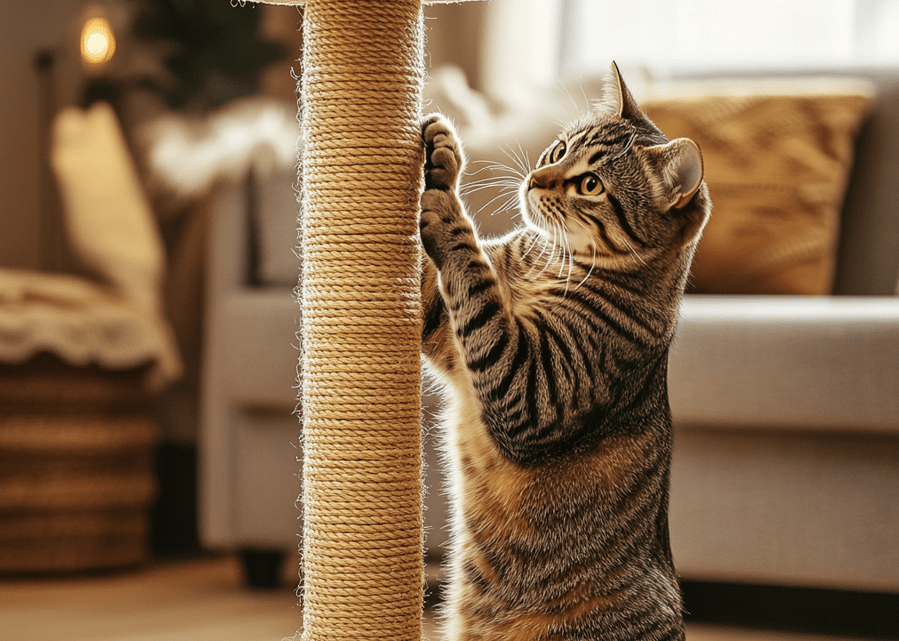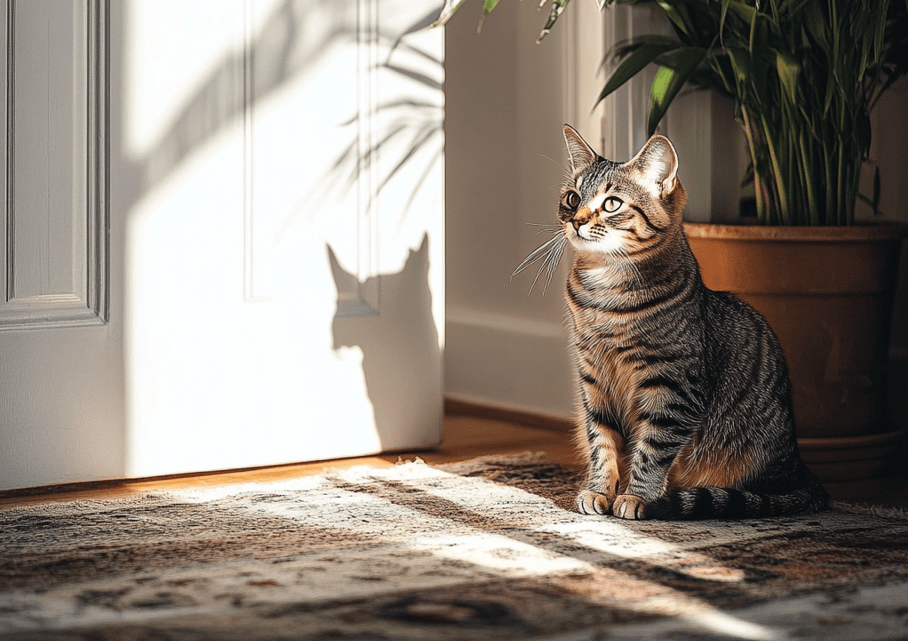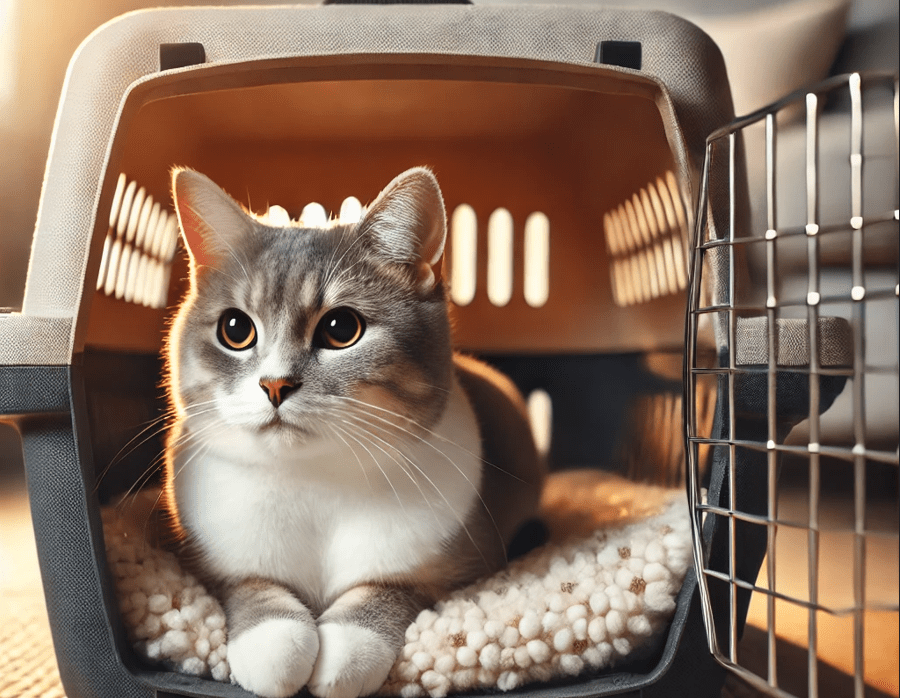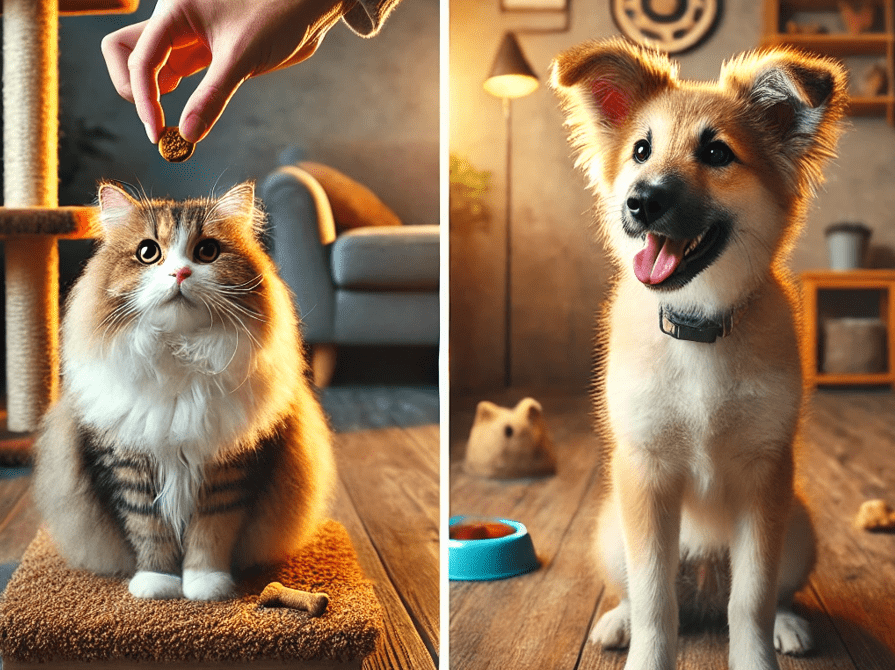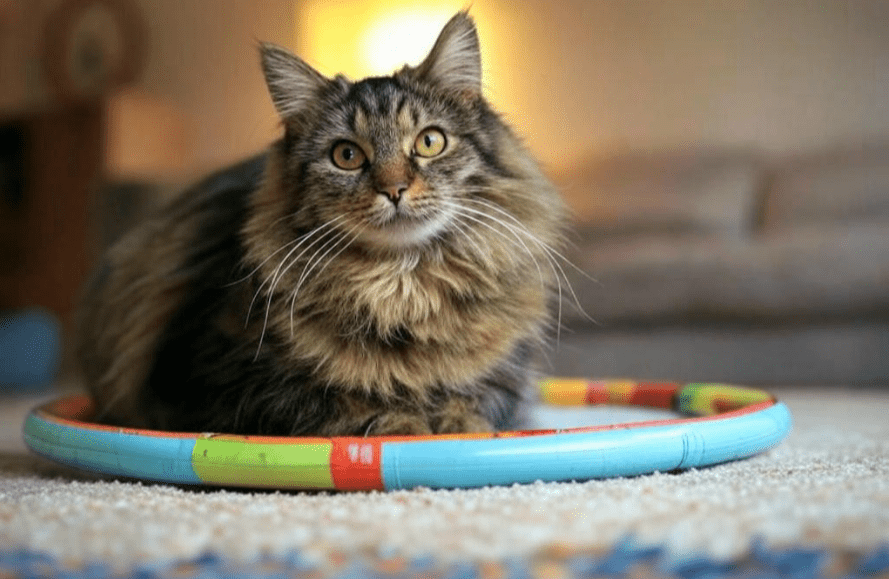
By using proper training methods any cat owner can teach their pet simple behaviors without professional help. You need to stay patient during training plus create suitable setup conditions while rewarding your cat successfully. Your pet will enjoy a dynamic new skill through hoop jumping which you can practice both for personal fun and to show others. Despite being independent animals cats will accept training when motivated correctly and taught basic lessons steadily.
This guide includes all information you require to train your cat through a hoop starting from setup preparation to choosing perfect hoop selection and staying focused. The guide will provide you with all necessary training skills and respond to usual pet owner inquiries about training cats.
Overview
1.This article gives you a preview of what you will learn about cat training through hoops.
2.Study how felines interact to recognize how their natural behavior shapes learning.
3.Find out how to choose the right training hoop and create the perfect training space successfully.
4.Receive training instructions by learning to split training into small tasks.
5.Staying away from typical mistakes helps you progress better.
6.Learning strategies to keep your cat energetic and how to deal with obstacles during training.
Let’s get started!
Understanding Your Cat’s Behavior
First understand your cat’s behavioral traits before beginning to teach them hoop jumping techniques. Dogs naturally want to please their owners while most cats remain independent animals who do not naturally grasp what their owner expects from them. Training cats to follow directions works best when you offer them treats since food motivates them effectively.
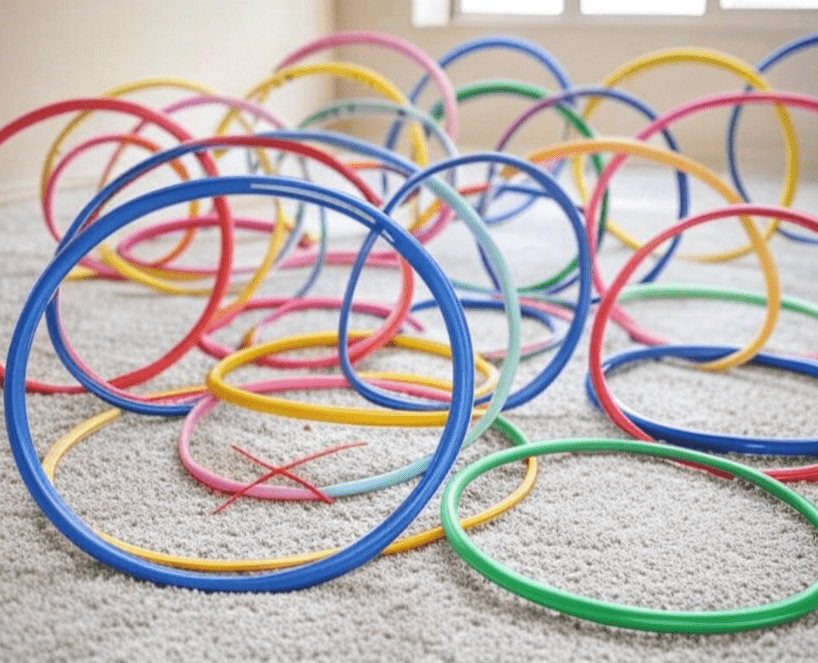
Your cat’s personal qualities affect the amount of times they need training. The training process varies between energetic and curious cats and cautious individuals who need more guidance. Train your cat slowly and stay patient because each cat learns at their specific rhythm.
Choosing the Right Hoop and Training Environment
Choosing superior equipment plus arranging an ideal training area are necessary steps to help your cat succeed with hoop jumping.
Choosing the Right Hoop
A lightweight and steady hoop lets your cat feel safe during training. A foam or plastic hoop proves best because it bends safely and provides comfort. Go for a hoop size that allows your cat to pass through but is not so big that the task becomes simple. A suitable hoop size should fall between 12 to 18 inches depending on the dimensions of your feline.
Metal hoops do not work well for cats since they are too heavy for your cat to handle and could cause harm if your cat hits the hoop during its attempt.
Setting Up the Training Area
Find a calm space without interruptions to start your cat training. Use a space where cats feel at ease usually their preferred play areas or a safe room for training. To help your cat succeed create an area with enough room both for the exercise tool and safe jumping distance.
Settle your cat for practice by putting away distractions including other pets plus noisy or entertaining items. The best way to work with your cat is by setting up a peaceful place that helps them concentrate and stay relaxed through training.
Step-by-Step Guide on How to Train a Cat to Jump Through a Hoop
After preparing necessary items you can start teaching your cat. Follow these basic training steps to teach your cat the hoop jumping technique.
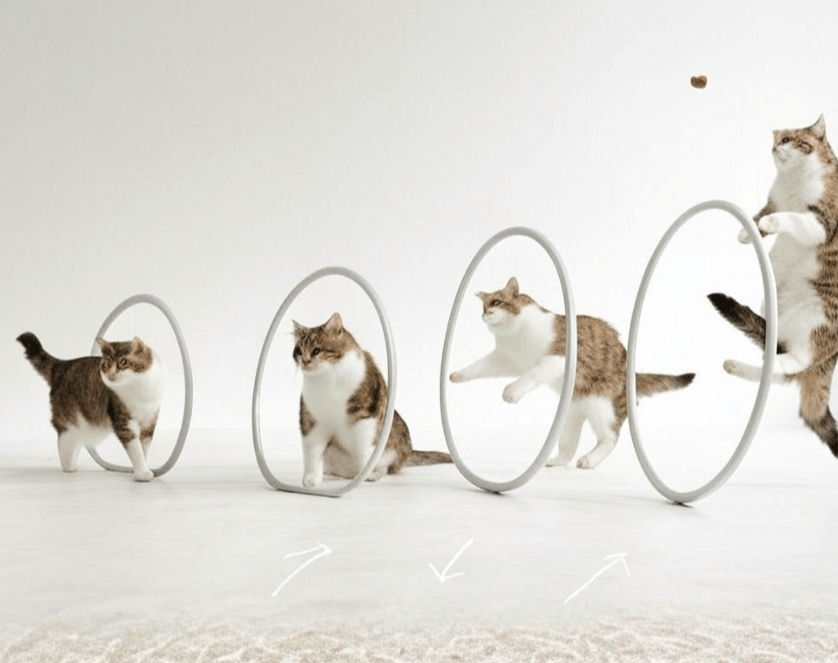
Step 1: Get Your Cat Comfortable with the Hoop
Before teaching your cat the hoop task you need to help them feel comfortable with the object first. Allow your cat to study and feel the hoop as it rests on the floor. Let your cat approach the hoop as they need since the strange object might make them cautious.
It is now time to proceed to the next phase when your cat stops showing fear toward the hoop.
Step 2: Introduce a Reward System
Since cats react strongly to food rewards make food part of your training plan. Choose a treat that will engage your cat because they will follow it for a reward. Start by showing your cat the treat at their nose to get their attention and then slowly move it toward the hoop. Holding the treat to guide your pet’s head and body through the hoop brings them closer to the treat. Letting your cat walk through without jumping is the initial objective before moving further.
Once they pass through the hoop give your cat an enthusiastic response plus the reward. The treat serves as motivation for your cat to keep using the hoop because the reward makes the activity more enjoyable.
Step 3: Raise the Hoop Gradually
After your cat performs the hoop walk without resistance you can begin to lift the hoop slowly from the ground. Begin with a small rise of the hoop then perform the treat procedure again. Lead your cat to pass through the hoop once more to earn their treat reward.
Lift the hoop step by step while letting it reach greater heights every few seconds. Slowly return the hoop to ground level if your cat demonstrates fear or stops advancing in the process. Remember, patience is key!
Step 4: Encourage the Jump
After training your cat has successfully passed through the full size hoop. Take this chance to motivate your cat to leap through the opening. Raise the treat a short distance over the tunnel for your cat to jump effectively. Reward your cat straight away when they jump by giving a verbal compliment and the desired treat.
When your cat hesitates allow the treat to touch their front feet gently until they start jumping. Force the behavior at any time. Your cat will know that jumping through the hoop leads to the reward after many training sessions.
Step 5: Slowly reduce your use of treats during the training process
When your cat learns to jump through the hoop effectively you need to reduce the number of rewards. You need to reward your cat now and then to keep the behavior but ultimately they must shift from doing the trick only for food rewards. Regular successful jumps will shift your cat to perform because they enjoy the activity more than just for food.
Common Mistakes and How to Avoid Them
Your training efforts with your cat will meet obstacles if you make these basic errors when teaching hoop jumping. Look out for these factors and use this plan to train your cat.
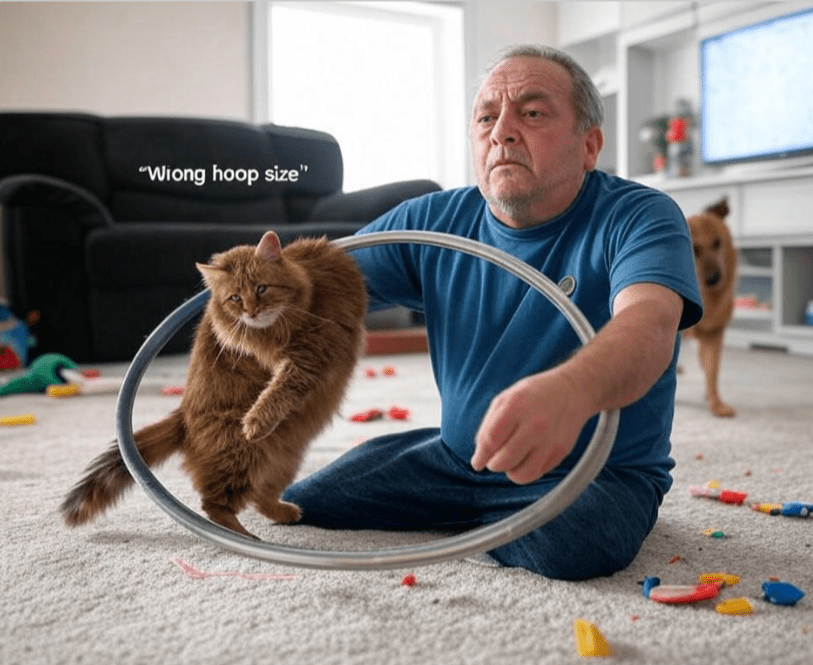
Too Much Pressure: Do not push your cat to perform if they are reluctant to the hoop exercise. You will struggle with your cat if you exert unnecessary force because this method yields negative results.
Inconsistent Training: Regular brief training practice produces better results than unpredictable episodes of lengthy training. Focus each workout to 5 to 10 minutes and train daily to help your cat maintain its good behavior.
Using the Wrong Hoop Size: Having a wrong-size hoop will either make the training too difficult or too simple for your feline companion. Use a hoop that suits your cat when starting training.
Lack of Positive Reinforcement: Training time must include rewards for cats to participate willingly. Give rewards to your cat even when they do small but proper actions.
Troubleshooting and Solutions for Common Challenges
Your attempts to teach a cat face multiple obstacles since this learning method proves tough. This section presents typical training problems and effective solutions for handling them.
Problem: The cat does not want to approach the hoop because of its nervousness.
Solution: Our first step should be to let the cat become comfortable with the hoop. Set the hoop where your cat already feels secure so they can gradually get comfortable with it. You should put treats close to the hoop during pleasant time together.
Problem: Cat Won’t Jump Through the Hoop
Solution: Stronger treats can help your cat practice the jump if they do not jump on their own. Move the treat only an inch above the hoop to interest your cat in jumping up. Take your cat through several progress stages by decreasing the height later increasing it after each success.
Problem: Training Sessions Aren’t Productive
Solution: Restrict training sessions to 5 to 10 minutes to stop your efforts from failing. Repeat your rewards patterns in training and reward your cat with praise only.
Maintaining Motivation and Overcoming Setbacks
The process needs time to succeed so create enjoyable moments during training. When your cat shows signs of straying or becoming upset, take a pause to continue teaching at a later moment. Make your training periods enjoyable for both of you during this learning process.

Normal setbacks belong in the training process. When your cat faces challenges with training you need to return to earlier exercises for additional practice time before trying the next steps. Forcing practice activities consistently with time creates desirable outcomes.
Conclusion
Training your cat to jump through a hoop offers you an enjoyable activity that builds better interaction between you and your feline companion. The right hoop selection and behavior analysis plus proper training steps will guide you to teach your cat to jump through the hoop successfully. Stay patient during training and celebrate your cat’s accomplishments while avoiding practise mistakes for better results. You are ready to apply what you have learned by starting to teach your cat to jump the hoop. Begin teaching your cat with pleasure while helping it master this new ability.

